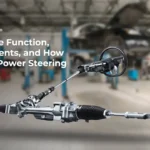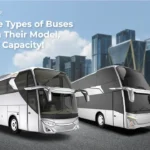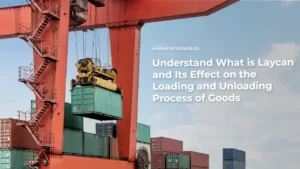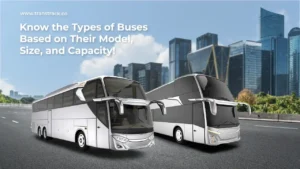Know the Causes, Effects, and How to Deal with Lane Hogger!
Posted on June 19, 2024 by Nur Wachda Mihmidati

On a typical day, on a busy highway, we often encounter drivers who constantly stick to the fast lane without regard for other road users. This phenomenon is known as “lane hogging” or “lane blocking.” Lane hogger, who are often unaware or ignorant of the consequences of their behavior, can be a source of frustration and even danger to other drivers on the road. In this article TransTRACK, we will explore the phenomenon of lane hogging, dive into its causes, and discuss solutions that can be implemented to deal with it.
What is a Lane Hogger?
Lane hogger is a term used to describe drivers who spend too long in the right or fast lane of a highway, without obeying the rule to move to the left lane after overtaking another vehicle. In many countries, the right lane (or left lane in countries with left-hand traffic) is usually reserved for faster-moving or overtaking vehicles, while the other lane is for slower-moving vehicles.
This lane hogging behavior can disrupt the flow of traffic, cause congestion, and increase the risk of accidents as other drivers have to make dangerous maneuvers to pass slow-moving vehicles in the fast lane. Lane hogging is also often perceived as rude driving behavior and disregard for other drivers on the road. In some jurisdictions, this behavior can even be subject to fines or legal sanctions.
Negative Impacts of Lane Hogger
The following are the negative impacts of Lane Hogger itself:
Traffic Disruption
Lane hogging causes congestion as faster vehicles are held up in the fast lane and have to move to the slower lane to overtake. This reduces the efficiency of traffic flow and lowers the average speed on the highway. Drivers stuck behind lane hoggers often feel frustrated, which can trigger aggressive driving behavior.
Highway Safety
Lane hogging increases the risk of accidents because other drivers must make sudden or dangerous maneuvers to pass slow-moving vehicles in the fast lane. This situation can lead to a head-on collision when vehicles pile up behind the lane hogger and drivers cannot anticipate the sudden deceleration. Obstructed drivers may change lanes suddenly and without signaling, increasing the likelihood of side-impact accidents or collisions with vehicles in adjacent lanes.
Environment
Traffic congestion and slowdowns caused by lane hogging increase vehicle emissions, as vehicles that move slowly or stop and start frequently consume more fuel. This results in more pollution compared to vehicles moving at a steady speed. In addition, higher fuel usage by vehicles that have to accelerate and decelerate frequently increases energy waste and economic losses.
Causes Why Someone Becomes a Lane Hogger
Lane Hogger will be very disturbing to other road users. Plus this behavior will adversely affect the established traffic flow. Here’s to the causes of why someone becomes a lane hogger:
Lack of Awareness
Many drivers do not realize that the fast lane should only be used for overtaking and not for driving at a steady speed. This ignorance is often due to a lack of understanding of traffic rules. Drivers who do not realize the negative impact of their actions tend to continue lane hogging.
Selfish Behavior
Some drivers are selfish and do not care about the comfort and safety of other road users. They feel entitled to drive in any lane they choose, regardless of their speed or the need for other drivers to overtake. This uncaring attitude reflects a lack of responsibility as a road user.
Lack of Traffic Education
Lack of adequate traffic education leaves many drivers not understanding the importance of proper lane usage. Many drivers do not get enough knowledge about driving rules and etiquette during their training. As a result, they tend to develop bad driving habits, including lane hogging.
Inadequate Road Conditions
Inadequate road conditions, such as narrow or damaged roads, can force drivers to stay in lanes that are inappropriate for their speed. In addition, lack of road maintenance or slow repairs often prevent drivers from switching lanes safely. This causes drivers to stay in the fast lane when they shouldn’t.
Narrow Roads or Lack of Clear Road Signs
Narrow roads or a lack of clear road markings can confuse drivers and keep them in the wrong lane. On narrow roads, drivers may not feel safe switching lanes, so they stay in the fast lane even when moving at slow speeds. The lack of clear road signs also leaves drivers unaware of the rules that apply or which lane they should be in.
How to Confront and Mitigate Lane Hogger
Here’s how to deal with and reduce lane hogger behavior:
Education and Awareness
Public awareness campaigns through social media, advertisements, and educational programs at driving schools can increase drivers’ understanding of the importance of proper lane usage. This education emphasizes the negative impact of lane hogging and the importance of good driving etiquette.
Law Enforcement
Strict law enforcement with fines or penalties for lane hogging drivers can be an effective deterrent. Surveillance through traffic cameras and police patrols on highways can help detect and crack down on these offenses consistently.
Use of Technology
Technologies such as lane-keeping assist systems on vehicles and navigation apps that provide lane usage alerts can help reduce lane hogging. Sensors and cameras on roadways connected to traffic analytics systems can also monitor and manage traffic flow in real-time.
Road Infrastructure
Improving road infrastructure with adequate lane widths, clear road markings, and dedicated lanes for slow vehicles can make it easier for drivers to change lanes as needed. With better infrastructure, traffic flow can be smoother and safer, reducing the incidence of lane hogging.
With the increasing awareness of the negative impact of lane hogging behavior, measures to mitigate this problem are becoming increasingly important. One attractive solution is the use of the latest technology such as TransTRACK’s Speed Limiter. With this system, vehicles can be effectively monitored and controlled to ensure compliance with speed limits and reduce the tendency to become lane hoggers. As such, let’s collectively adopt this technology to create a safer, smoother and more efficient driving environment for all road users.
Recent Post
Know the Function, Components, and How Electric Power Steering Works!
December 24, 2025Know the Types of Buses Based on Their Model, Size, and Capacity!
December 22, 2025Topic :
Recommended Articles
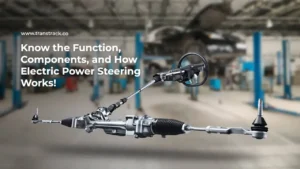
 Bahasa Indonesia
Bahasa Indonesia



